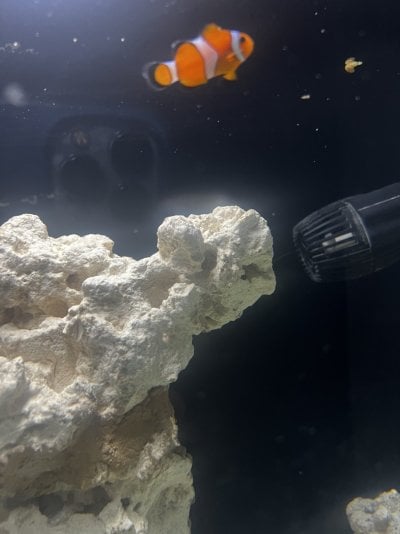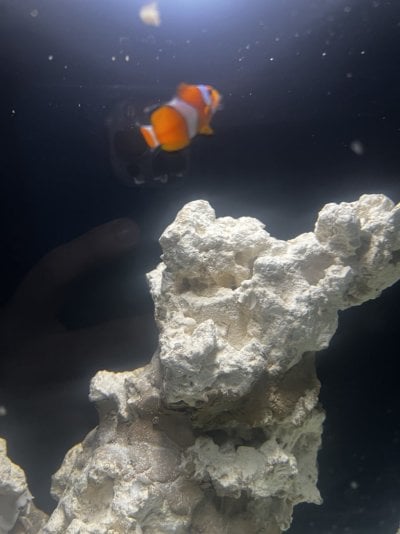Bear with me, l'll try to keep it short, I can answer additional questions/info needed in comments...
Symptoms: fish not eating yesterday and barely taking a bit - white stringy on his bottom for 10min about 2 weeks ago then noticed again today
Usually fed: omega one mini pellets once a day.
He's also had freeze dried mysis/brine and frozen saltwater mix cubes which he's always shown to love. On rare occasions I give him some.
History:
Doing fish in cycle after following brs guide (yeah yeah IKIk, spare me the lecture I was not fully educated on the matter)
- For starters I quickly discovered my prepped rodi with 10 salt had about 1ppm ammonia after mixing salt. Can't find the culprit yet. But 0 nitrite
- Went to Ifs to get advice and get more dr Tim's one and only after realizing I should have removed the filter socks and I felt like my cycle was not starting and I was also getting concerned about ammonia toxicity.
Employee advised doing water changes to maintain levels no higher than 1ppm ammonia. - went back for some update as I was confused about my ammonia in freshly made saltwater and asked for them to test. This time the manager was with the employee. He advised I stop water changes as it seems to be stalling my cycle and doesn't feel useful since I have ammonia in the water changed anyway. He said to ride it out.
- finally had ammonia spike then drop almost at 0 today. Fish was acting normal during spike.
Nitrite has been high for a few days and I'm having a hard time getting an exact result. These api test are not very clear. Can say if it's 2 or 5 or more so here is a picture.
Also yes I started my cycle with fresh rodi 5 stage and had high nitrite and nitrate in. Didn't realized till later.
Maybe due to the fact I used a an old return pump that was maybe not properly cleaned.
And no chloramine in water.
What are your thoughts?




















